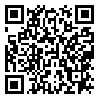Volume 4, Issue 8 (12-2014)
JRSM 2014, 4(8): 11-20 |
Back to browse issues page
Download citation:
BibTeX | RIS | EndNote | Medlars | ProCite | Reference Manager | RefWorks
Send citation to:



BibTeX | RIS | EndNote | Medlars | ProCite | Reference Manager | RefWorks
Send citation to:
The Comparison of the Effect of Age and Object Location on the Hand Selection in the Reaching Task. JRSM 2014; 4 (8) :11-20
URL: http://jrsm.khu.ac.ir/article-1-2211-en.html
URL: http://jrsm.khu.ac.ir/article-1-2211-en.html
Abstract: (4627 Views)
The purpose of this study was to investigate the effect of age and object location on the hand selection in reaching task 120 right-handed children, adolescents and adults were selected as aur as a participant. Handedness was determined by Stanley-corn (1992) handedness Questionnaire. The tasks included lifting, reaching, and making actual use of three different objects. After the participants made 6 attempts, the objects location was changed. Each of the participants had to make 18 attempts. Data were analyzed through Two-way ANOVA and the significant level of 0/05 was used for all statistical analysis. The results showed that there is no significant difference in mean frequency of reaching in right hemi space among children, adolescence and adults (p&ge 0/05). But, there is a significant difference in the mean frequency of reaching in middle line crossing and left hemi space among children, adolescence and adulthood) p&le 0/05). The results also indicated that, Children, compared with adults and adolescents, used non-preferred hand in middle line crossing and left hemi space in reaching objects. In the same way, adults compared with adolescents, used non-dominant hand when reaching objects in middle left hemi space. So, in childhood, it is probable that the consolidation of the dominant-hand has not been established in adolescence, however, relying on dominant-hand to do the tasks increases. In adulthood, regarding the object location, tendency of using both hands, dominant- and non-dominant hands, increases.
Type of Study: Research |
Accepted: 2022/03/31 | Published: 2015/03/15
Accepted: 2022/03/31 | Published: 2015/03/15
| Rights and permissions | |
 | This work is licensed under a Creative Commons Attribution-NonCommercial 4.0 International License. |



